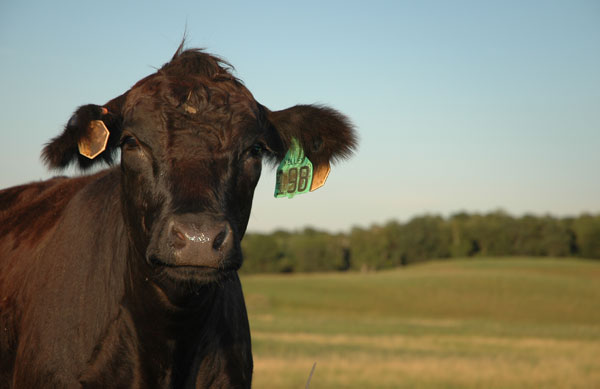Cows in the seventh or eighth month of their pregnancy already face stress carrying the calf; when temperatures hit over 100F degrees that adds stress.
August 2, 2012

Some heat-stressed cows are delivering premature calves, ahead of normal fall-calving season.
With a heat wave and severe drought, fall-calving season might become as labor intensive as winter calving, say University of Missouri Extension specialists. Farmers who have calved both spring and fall prefer the normally trouble-free ease of fall calving.
"Cows under stress need to be watched closely," says David Patterson, MU beef reproduction specialist.
"Cows bred to calve in the fall tend to start delivering calves early. Producers should start watching before the predicted calving date."
Eldon Cole, extension livestock specialist at Mount Vernon, Mo., confirmed that idea. "I know cows calve early, but some are already coming a month early."
Patterson says cows under stress reduce blood flow to the uterus, triggering premature calving. "When nights do not cool down, the cow's body does not reach a thermo-neutral state. The heat stress builds."
Justin Sexten, MU beef nutritionist, said cows in seventh or eighth month of pregnancy already face stress carrying the calf. When temperatures hit over 100F degrees that adds stress.
In addition, cows on poor pasture may not be getting adequate nutrition. "Over mature pastures will provide too much fiber and not enough energy. Fiber digesting in the rumen creates more heat," Sexten says.
Cole says premature calves are small and weak. To add to the problem, the mama cows did not have milk. The calves need both colostrum, the first milk that contains the antibodies for health protection, and they need hydration.
Temperatures over 100F and relative humidity down at 20 percent dehydrates calves dropped on a hillside in full sun. "Cows don't always pick an ideal spot to drop their calf," Cole says. "They may not be under a shade tree."
"When calving in winter, farmers pick up calves and put them under the heater in their pickup truck," Cole says. "They may need to put them under the air conditioner now."
Cole says he was alarmed when first early-calving reports came in, as death losses were high. However, other producers are having calves born closer to predicted dates, within two weeks early.
"We were spoiled by good weather without high temperatures the last couple of Augusts," Cole says. "Breeders began pushing for earlier calving dates."
Calves that were to be due September 1 are now due in August. "That may not work well this year," he adds. "Flies are going to be more of a problem."
Management attention is critical
Fall calves that become summer calves may need as much management attention as winter calves.
Sexten, the beef nutritionist, had earlier pointed out that cows approaching calving dates should be on a rising plain of nutrition.
On drought-dried pastures, cows may not get enough energy in their diet to produce milk at calving. On the cow herd at the MU Beef Farm, Columbia, he started supplemental feeding a pound of distillers by-product grains to add protein and energy to the pasture ration.
The cow's rumen needs protein to keep microbes working, digesting fiber.
Extra attention must be given to assure plenty of clean water for the mama cows. Shade helps also.
Sexten was not ready to call it a "weak-calf syndrome." But, emphasized that early attention saves calves. Intervention can save weak calves whatever the season.
Rob Kallenbach, MU forage specialist, hasn't seen problems with early calving in northern Missouri.
However, he said two cows did have premature births last August at the MU Southwest Research Center, Mount Vernon, Mo. "We had a couple of calves that weren't much bigger than cats. They could not reach the cow's udders."
Both lived, but became bottle calves. They had to be given away to get needed care.
"When cows are bred to calving-ease bulls, we always recommend starting to watch cows before their due date," Patterson says. "The calves usually come early."
Sexten recommends delaying breeding fall-calving herds until December 1. "Many people have backed up to breeding at Thanksgiving," he says. "Calving earlier is riskier."
You May Also Like



